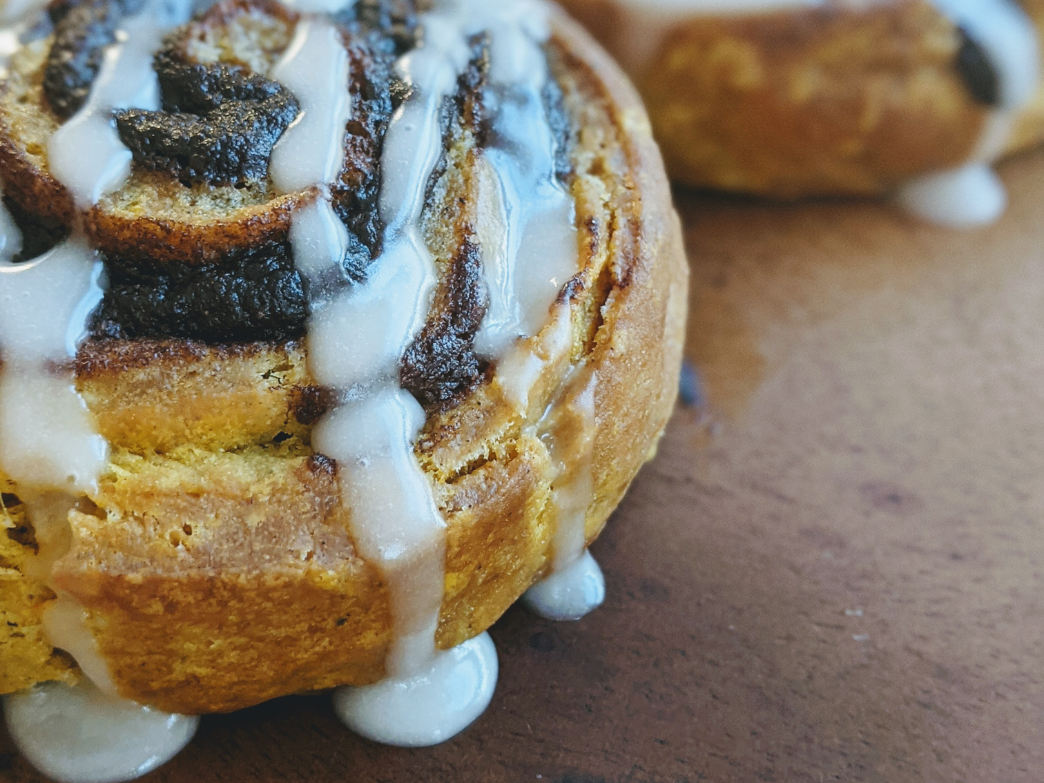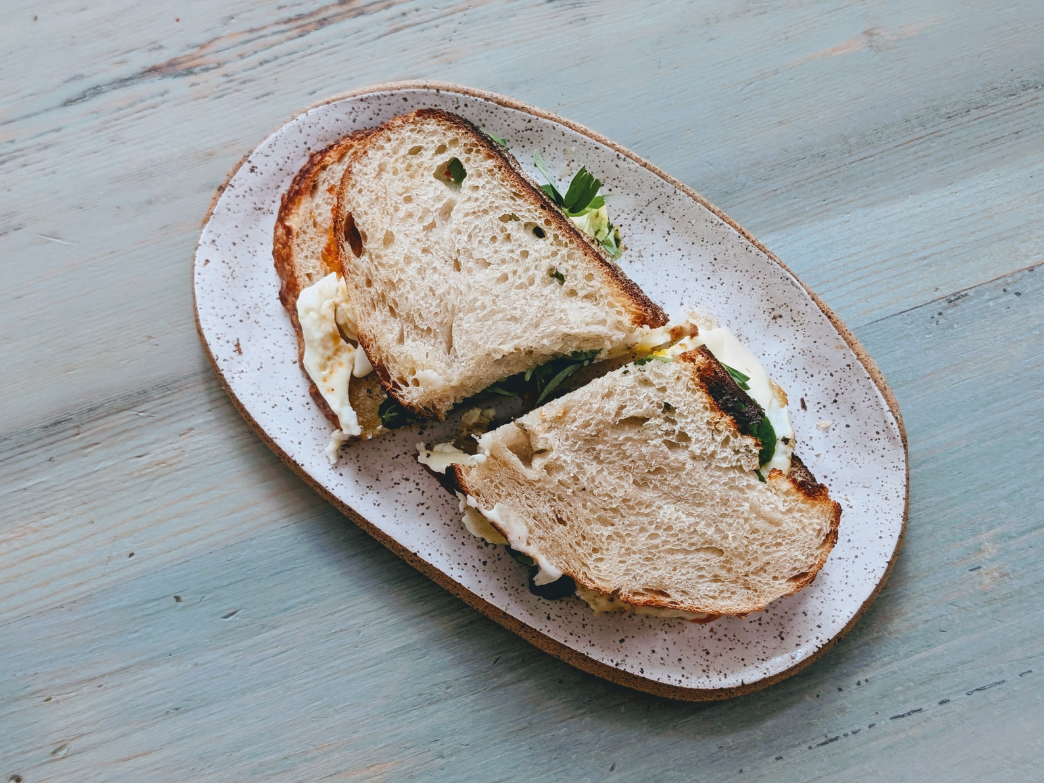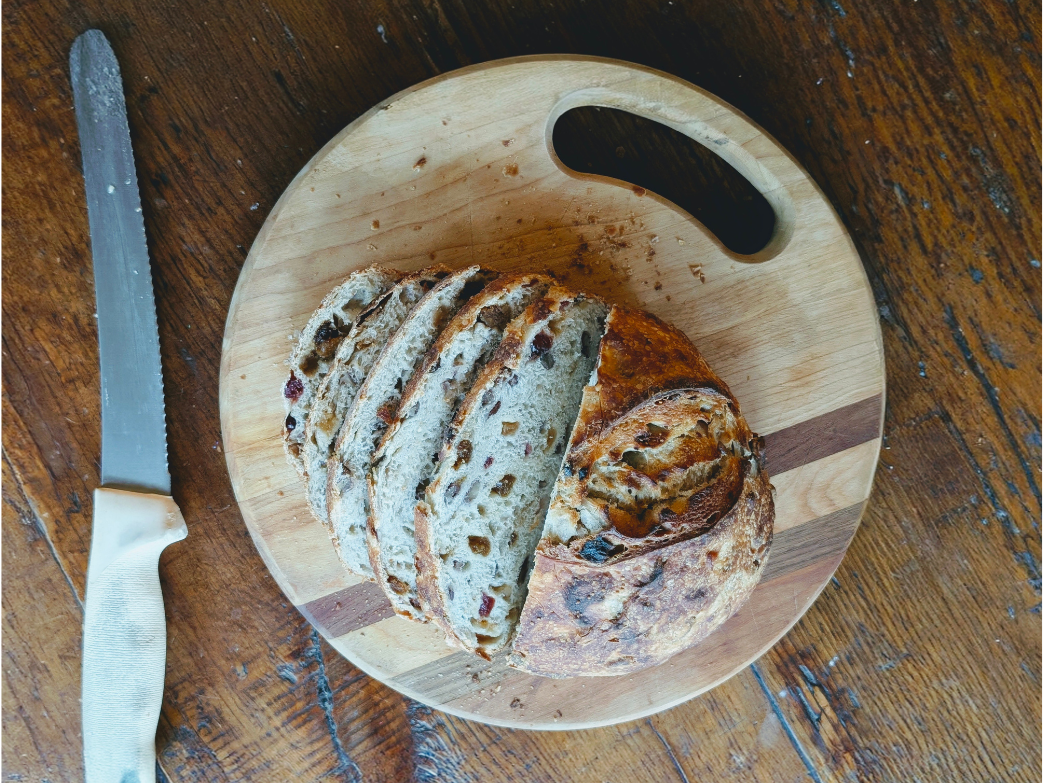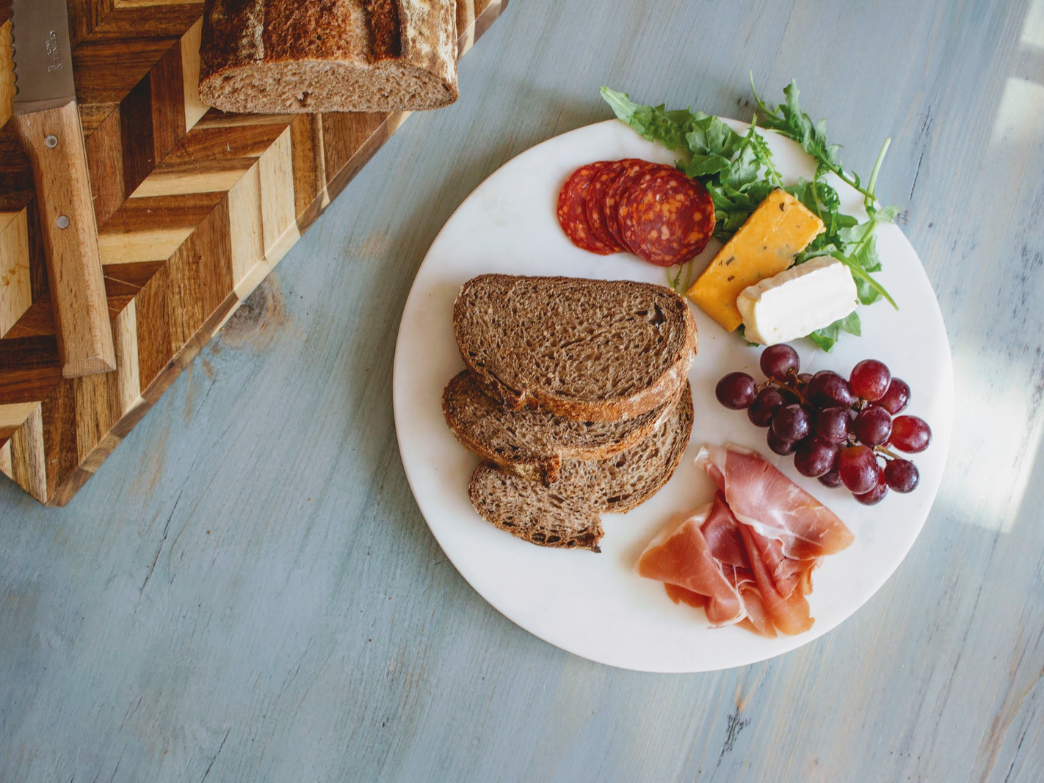By Lucy Yanckello, Ph.D.
Wildgrain, opens in a new tab is the first bake-from-frozen subscription box for sourdough breads, fresh pastas, and artisanal pastries.
People across the world love desserts that contain cinnamon, such as cinnamon buns, cinnamon rolls, and sticky buns. When sticky buns or cinnamon rolls are on the breakfast table, it may be hard to tell them apart, because you’re likely distracted by their delicious smell wafting up. Ever wonder what the difference is between the sticky buns and cinnamon rolls? Let’s find out!
What is a sticky bun? Where do sticky buns originate from?
Sticky buns, opens in a new tab (also referred to as honey buns or caramel buns) originated in Germany. Sticky buns were introduced to Americans by the Pennsylvania Dutch settlers as a sweet breakfast bread filled with brown sugar, nuts, and sometimes cinnamon. Sticky buns are made by first pouring a glaze into a baking dish and then placing the buns on top of the glaze. Once baked, the pan is inverted and the gooey delicious glaze is now on top of the sticky buns.
What is a cinnamon roll? What is the inside of a cinnamon roll made of?
Cinnamon rolls, opens in a new tab (also referred to as cinnamon buns and cinnamon swirls) are believed to have originated in Sweden and then made their way to the United States. To make cinnamon rolls, a mixture of cinnamon, sugar, and butter is spread onto a flat sheet of sweet dough. The dough is then rolled up, making the classic cinnamon roll shape. The inside of a cinnamon roll is made of that mixture of cinnamon, sugar, and butter. After baking, cinnamon rolls are typically finished with a sweet glaze.
Can cinnamon rolls be healthy?
Though cinnamon rolls, opens in a new tab are not particularly healthy desserts, cinnamon rolls can be a sweet treat as part of a healthy diet. One of the main health issues with cinnamon rolls is the high level of butter and therefore saturated fat. Saturated fats should be limited to 5% to 6% of daily caloric intake, according to the American Heart Association. To make a healthier cinnamon roll, try substituting butter with plant-based butter to decrease the amount of saturated fats in the recipe. Plant-based butters also contain higher levels of monounsaturated and polyunsaturated fats. which can lower risk of heart disease and stroke when eaten in moderation.
Is a sticky bun the same as a cinnamon roll? What’s the difference between cinnamon rolls vs. sticky buns?
A sticky bun, opens in a new tab and a cinnamon roll, opens in a new tab are not the same. First, the baking methods for sticky buns and cinnamon rolls are different. The dough used to bake sticky buns is filled with a mixture of butter and brown sugar, and then placed in a pan on top of a layer of a glaze and nuts. Once baked, the pan is inverted so the sticky glaze and nuts are on top of the sticky buns. In contrast, the glaze on cinnamon rolls is added only after the rolls are fully baked.
In addition, two main ingredients are different between sticky buns and cinnamon rolls: nuts and cinnamon. Sticky buns traditionally include a nut topping, and cinnamon rolls do not have nuts. Though sticky buns may contain cinnamon, they do not always contain the spice, whereas cinnamon rolls always contain cinnamon (as the name implies). As a result, sticky buns have a more nutty and toffee-like taste compared to cinnamon rolls, which are more sugar-and-spice forward.
What is the difference between cinnamon buns vs. cinnamon rolls vs. cinnamon swirls?
Although cinnamon buns, rolls, opens in a new tab, and swirls all have very distinct names, there is no difference between cinnamon buns, cinnamon rolls, and cinnamon swirls. These three names are all used interchangeably referring to what we have described as cinnamon rolls in this article. Choose your favorite name, either way, it will be referring to a delicious treat!
Where can I buy sticky buns or cinnamon rolls online?
At Wildgrain, opens in a new tab, we specialize in making high-quality, fresh baked goods that are delivered directly to your door. Wildgrain is the first bake-from-frozen delivery subscription service for breads, pastries, and fresh pastas. Some of our popular baked goods include pecan sticky buns, opens in a new tab and cinnamon rolls, opens in a new tab. Learn more about Wildgrain, opens in a new tab and our artisanal baking and cooking methods.
About the Author
Lucy Yanckello received her Ph.D. in nutrition from the University of Kentucky College of Medicine. She currently works as a medical writer and enjoys being able to help people better understand nutrition and science.
This content is for informational use only and does not replace professional nutrition and/or medical advice, diagnosis or treatment. It is not a substitute for and should not be relied upon for specific nutrition and/or medical recommendations. Please talk with your doctor about any questions or concerns.



